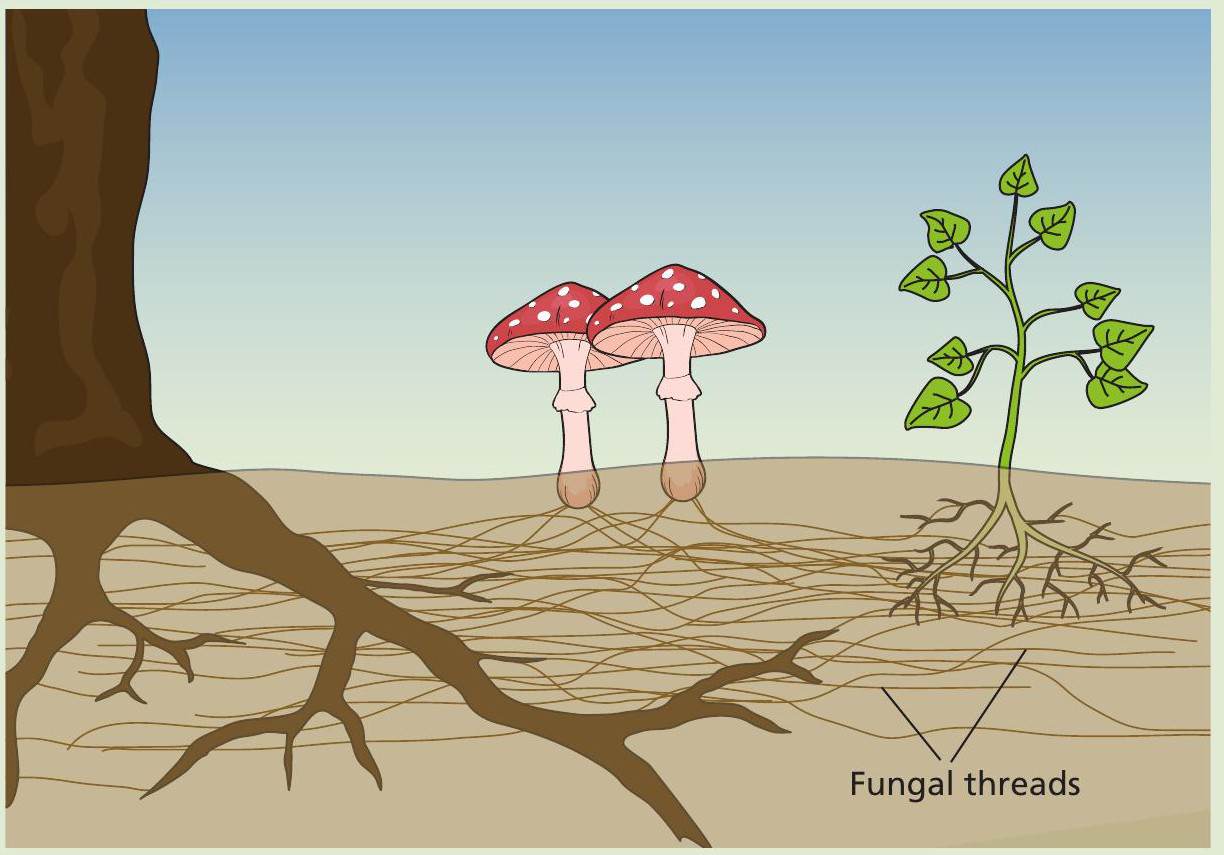
Beneath the forest floor, every gram of soil contains millions of microorganisms. Some of the fungi in this group form intimate links with plant roots but do not cause disease or decomposition — instead they benefit their hosts. The fine threads of the fungi (see Figure 1) vastly increase the area of soil from which the plants can take up water and minerals. This is great for plants growing in soils low in essential minerals, such as nitrates and phosphates. The plants also benefit from the carbon dioxide produced as the fungi respire. In return, the fungi gain useful products from the plant. These include oxygen and carbon in a form that the fungi can use (e.g. sugars) when the plant is photosynthesising. The name for these fungus– root partnerships is mycorrhizae (myco- = fungus; rhiz- = root), and the only time most of us become aware of them is when the fungi produce their fruiting bodies (toadstools).
The fungal threads can unite the roots of dozens of plants into a single underground network. These networks can transport water, nutrients and chemical signals. Tracing the movement of radioactive carbon isotopes through these extensive webs shows that nutrients flow from trees that make excess food to ones that don’t have enough. Saplings with the greatest access to mycorrhizal networks grow biggest and fastest.
Your organisation does not have access to this article.
Sign up today to give your students the edge they need to achieve their best grades with subject expertise
Subscribe




